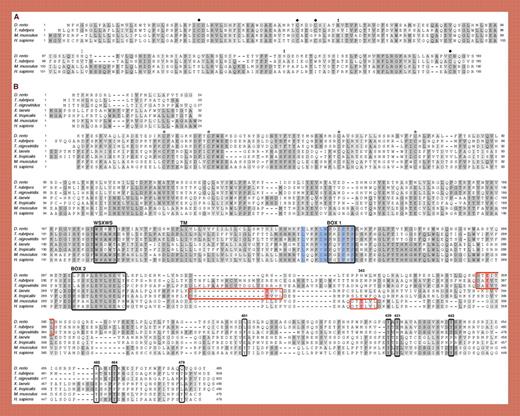Erythropoiesis is a central feature of vertebrate development. Erythroid cells in vertebrates come from 2 lineages, primitive and definitive. Primitive erythropoiesis originates in the embryonic yolk sac or its equivalent and is transient in nature. Definitive erythropoiesis originates in the yolk sac or the aorta-gonad-mesonephros region, shifts to the kidney, spleen, liver, or bone marrow, and lasts for the lifespan of the organism. Erythropoietin receptor (EPOR) signaling is essential for definitive erythropoiesis in mice from the colony forming unit–erythroid progenitor stage onward,1,2 but little is known about the role of EPOR signaling in lower vertebrates. In this issue of Blood, Paffett-Lugassy and colleagues take us back 450 million years, to the time when fish diverged from higher vertebrates in evolution, to show that the EPO-EPOR signal transduction axis is a highly conserved component of vertebrate erythroid development.
Paffett-Lugassy and colleagues have cloned the zebrafish homologs of EPO and the EPOR (see figure). Zebrafish epo is only 35% identical to human EPO; however, there is considerable homology between the proteins in their secondary and tertiary structure. Zebrafish epo possesses a subset of the N- and O-linked glycosylation sites that are important for mammalian EPO activity. Zebrafish epor is only 27% identical to the human EPOR, but also retains key structural features. In its extracellular domain, the zebrafish epor possesses 4 highly conserved cysteine residues and a “WSXWS” domain. In its cytoplasmic domain, zebrafish epor has a conserved hydrophobic patch, and box 1 and box 2 domains, which are essential for the binding and activation of janus kinase 2. Five out of 8 tyrosine residues, which serve as docking sites for downstream signal transduction pathways, are also conserved.
Alignment of vertebrate Epo and Epor sequences highlights conserved functional residues. See the complete figure in the article beginning on page 2718.
Alignment of vertebrate Epo and Epor sequences highlights conserved functional residues. See the complete figure in the article beginning on page 2718.
Importantly, Paffett-Lugassy and colleagues demonstrate that the EPO-EPOR signal transduction axis is functional in zebrafish. Zebrafish epo expression is strongly induced in the hypochromic weissherbst mutant and, to a lesser extent, by hypoxia. Microinjection of zebrafish epo mRNA into 1-cell–stage embryos causes expansion of erythroid populations and polycythemia. Finally, morpholinos against the zebrafish epor cause a decrease in primitive erythropoiesis and a complete block of definitive erythropoiesis. Human EPO was not active in zebrafish, suggesting that the ligand-receptor pair has coevolved.
Zebrafish may provide a useful model for the investigation of signal transduction pathways downstream of the EPOR. In that regard, Paffett-Lugassy and colleagues identified a potential STAT5 docking site in the zebrafish epor and showed that morpholinos to zebrafish stat5.1 cause decreased primitive erythropoiesis and a block of definitive erythropoiesis. However, STAT5 affects other hematopoietic compartments in mice,3,4 and this experiment does not establish the developmental stage at which STAT5 is required. Furthermore, STAT5 may function as a transcriptional repressor to regulate primitive erythropoiesis in Xenopus, suggesting a different mechanism of action.5 The role of STAT5 in EPOR signaling has been studied with receptor mutants in mice,6 and this approach may also be informative in zebrafish. Additional biochemical and genetic studies in the zebrafish model should help define the essential aspects of EPOR signaling, as well as functionally significant changes that have occurred over the past 450 million years.
Conflict-of-interest disclosure: The authors declare no competing financial interests. ■


This feature is available to Subscribers Only
Sign In or Create an Account Close Modal